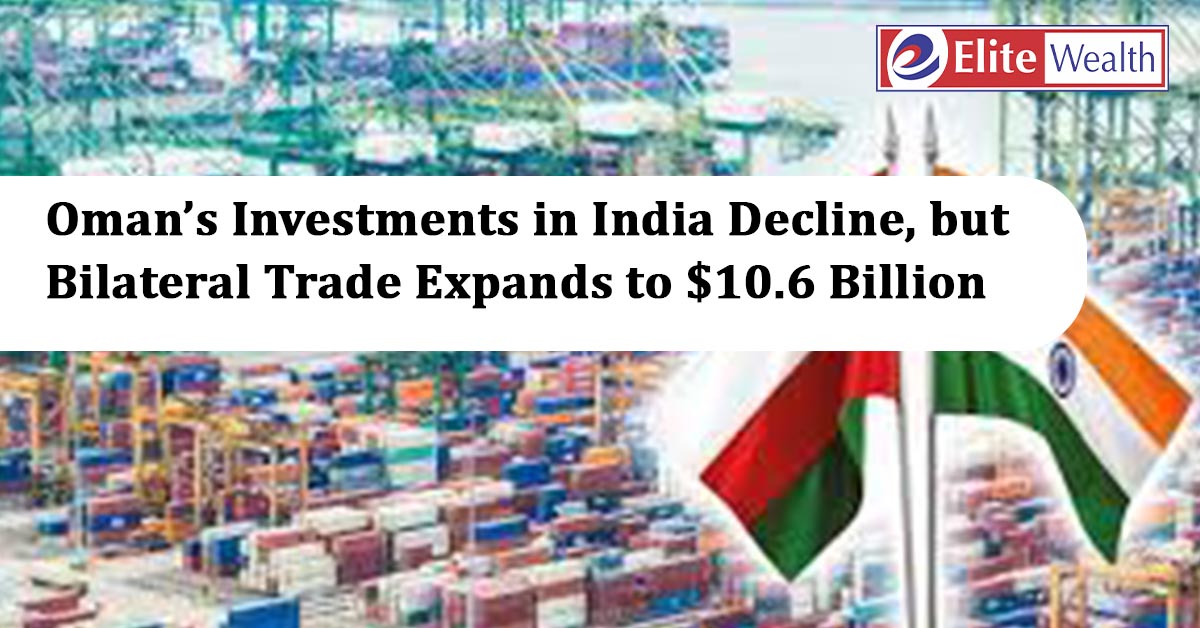
India and Oman share a long history of cultural, strategic, and economic ties, with energy and trade acting as the cornerstones of their bilateral relationship. However, a closer look at the data reveals a divergence: while trade between the two nations has grown rapidly in recent years, Omani investments in India have been shrinking steadily since the pandemic.
A recent analysis shows that in FY25, India received $605.6 million in foreign direct investment (FDI) from Oman, amounting to just 0.08% of total inflows. This figure, though marginally higher than the $593.9 million in FY24, is well below Oman’s pre-pandemic contributions. Oman now ranks 39th among India’s FDI sources, down from 31st in FY18, when its share of inflows stood at 0.12%. Notably, of the $606 million invested from Oman since FY18, only $150 million has come in over the last seven years, highlighting a tapering role as an investor in India.
This trend stands in contrast to other Gulf economies. The UAE, Qatar, and Saudi Arabia have sharply increased their investment commitments in India’s infrastructure, renewable energy, and logistics sectors. Sovereign wealth funds from these countries are actively betting on India’s growth story, while Oman’s participation has remained modest.
Trade Outpaces Investments
Even as investment inflows have lost momentum, bilateral trade between India and Oman has witnessed a significant surge. The pandemic-era slowdown has been left behind, with trade volumes climbing from $5.9 billion in FY20 to $10.6 billion in FY25. This sharp expansion underscores the centrality of hydrocarbons and other commodities in the economic relationship.
Import-Led Growth
India’s imports from Oman have more than doubled since FY21, rising from $3.1 billion to $6.5 billion in FY25. Mineral fuels continue to anchor the basket, contributing $2.94 billion in FY25 alone. Fertilisers have emerged as another major driver, with imports surging to $1.07 billion, reflecting India’s growing reliance on Oman to meet its agricultural input needs.
Chemicals, both organic and inorganic, have steadily strengthened their role, with imports worth $608.7 million and $407.8 million, respectively, in FY25. Additionally, the aviation sector has added ballast to trade flows, as India imported aircraft and parts worth $328.4 million. Beyond these, Oman’s non-oil exports to India have widened, including $406.8 million of salt, sulphur and stone, $219.2 million of plastics, and $64.7 million of iron and steel.
Softer Export Performance
On the other side, India’s exports to Oman have shown some softness in recent years. From a high of $4.48 billion in FY23, exports slipped to $4.07 billion in FY25. The decline was concentrated in petroleum products, which dropped from $2.19 billion in FY23 to $1.57 billion in FY25, reflecting global price volatility and lower demand.
Another notable fall came from the episodic “ships and boats” category, which plunged from $295.8 million in FY24 to just $10.4 million in FY25. Excluding these categories, however, India’s export basket to Oman has remained relatively stable. Cereals stood at $188.7 million, pharmaceuticals rose to $54.2 million, plastics reached $78.8 million, and electrical machinery contributed $149.5 million. Apparel exports also maintained consistency at nearly $63.8 million.
Policy Push and Trade Agreement on the Horizon
The changing dynamics of India-Oman economic ties are set against a broader backdrop of India’s engagement with the Gulf region. Speaking at the FICCI Leads Summit on September 10, Commerce and Industry Minister Piyush Goyal highlighted that a trade agreement with Oman is likely to be signed within weeks. He also confirmed that India and Qatar will finalise terms of reference for a trade deal in early October.
The proposed India-Oman agreement is expected to deepen economic cooperation by reducing trade barriers, diversifying the trade basket, and creating pathways for fresh Omani investments in India. While hydrocarbons and fertilisers will remain central, the deal could open doors in sectors such as clean energy, logistics, and technology collaboration.
Such a pact could also provide Oman with an opportunity to regain relevance as an investor in India. As New Delhi pushes ahead with large-scale infrastructure development and renewable energy projects, Oman could leverage its strategic location and industrial capacity to become a stronger partner.
Strategic and Regional Significance
Beyond trade and investment, Oman’s role holds strategic importance for India. Geographically located at the mouth of the Persian Gulf, Oman serves as a vital maritime gateway for India’s energy imports and regional trade routes. Both nations have also collaborated on security and defence, ensuring maritime stability in the Indian Ocean region.
From a regional perspective, Oman’s declining FDI share contrasts with the aggressive push by its Gulf peers. Saudi Arabia has pledged billions through its sovereign wealth funds, while the UAE has emerged as one of India’s largest FDI sources. If Oman does not recalibrate its approach, it risks being overshadowed by its neighbours in shaping India’s Gulf engagement strategy.
Summary
- FDI Decline: Oman’s FDI into India was $605.6 million in FY25, just 0.08% of total inflows, down from pre-pandemic levels.
- Trade Expansion: Bilateral trade grew from $5.9 billion in FY20 to $10.6 billion in FY25, led by fuel, fertiliser, and chemical imports.
- Exports Under Pressure: Indian exports dipped to $4.07 billion in FY25 due to lower petroleum and ship exports, though core items like cereals, pharma, and machinery held steady.
- Future Outlook: A likely India-Oman trade agreement could boost trade further and create room for Omani investments in India’s infrastructure, energy, and technology sectors.
- Strategic Relevance: Oman remains a key maritime and regional partner, but risks losing ground to Gulf peers unless it steps up its economic engagement with India.
Link for Charts & Tables:
Disclaimer:
This article is intended solely for educational and informational purposes. The securities or companies mentioned are provided as examples and should not be considered as recommendations. Nothing contained herein constitutes personal financial advice or investment recommendations. Readers are advised to conduct their own research and consult a qualified financial advisor before making any investment decisions.
Investments in securities markets are subject to market risks. Please read all related documents carefully before investing.
